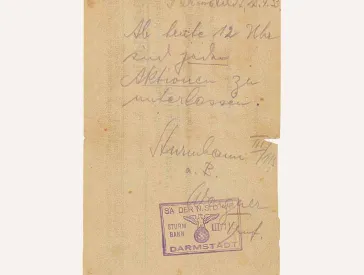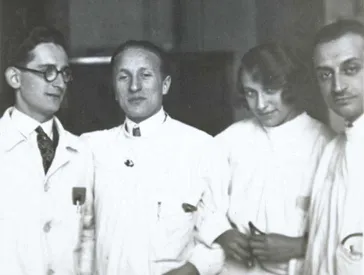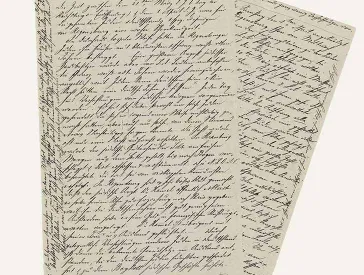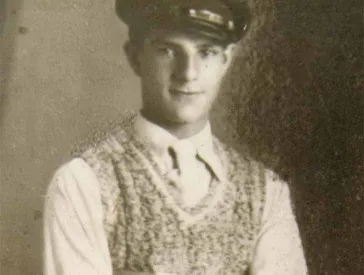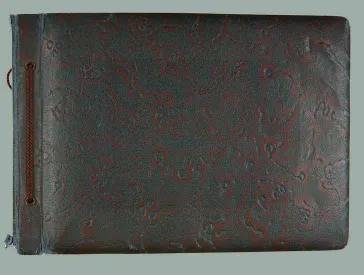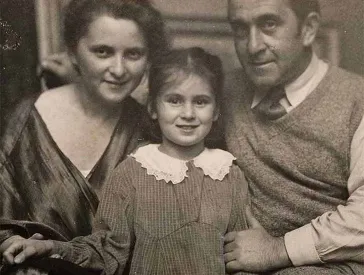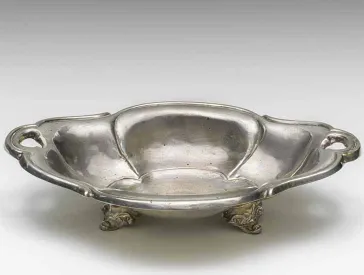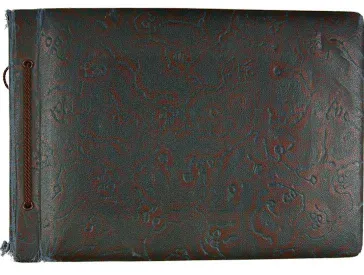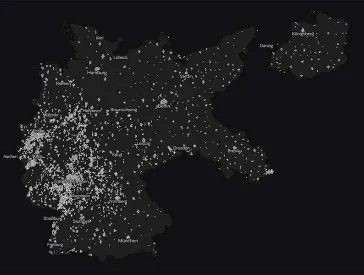Report by Alfred Binswanger
In the days leading up to the boycott on 1 April 1933, many Jews in the Bavarian city of Regensburg were taken into “protective custody” (Schutzhaft), including the seventy-three-year-old factory owner Alfred Binswanger.
Binswanger’s estate contains a report he wrote in neat Sütterlin script a few days afterward. It describes the course of events, including the mass arrest of around 124 Jews on 30 March 1933. Binswanger was among those detained. He was not subjected to physical violence and was released the next day because of his poor health and advanced age.
One short passage in his account refers to the fate of a Jewish merchant in Straubing, around 45 kilometers away:
“In Straubing the Jewish merchant Selz was dragged from his bed early in the morning, taken to Bogen and shot there, his body mutilated. The NSDAP claimed that the crime had been committed by disguised communists.”
The murdered man was Otto Selz.
Portrait of Alfred Binswanger (1860–1933), ca. 1931; Jewish Museum Berlin, accession 2013/22/0, gift of Mara Fazio. Further information about this photo can be found in our online collections (in German)
Report by Alfred Binswanger (1860–1933) describing his arrest in March 1933, Regensburg, 11 April 1933; Jewish Museum Berlin, accession 2010/1/83, gift of Danny L. Goldberg, photo: Jens Ziehe. Further information on this document can be found in our online collections (in German)
Translation of the report by Alfred Binswanger
Report by Alfred Binswanger (1860–1933) on his arrest in March 1933
p>
“Regensburg, 11 April 1933
For all the Jews in Germany, including those in Regensburg, the days between 21 March (the opening of the Reichstag) and 1 April this year were a truly horrific time.
In a proper show of loyalty, the Jews of Regensburg had decked their homes with blue and white flags and black, white and red colors. But the SA ordered many Jewish building owners to take down the black, white and red flags because Jews were allegedly not Germans and had no right to display the German flag.*
*On our property on Unterer Markt we flew both the blue and white and the black, white and red flags without attracting any trouble; in the warehouse of the [illegible] headquarters we hoisted the black, white and red colors and the swastika flag. The posters saying "Do not buy from Jews, buy from Germans" were not posted at our shop in Maxstrasse or on Unterer Markt.
Jewish citizens were arrested every day – not only those who had made themselves unpopular in some particular way, but also Jews of good reputation. The arrested persons were often held only for a night. In Straubing the Jewish merchant Selz was dragged from his bed early in the morning, taken to Bogen and shot there, his body mutilated. The NSDAP claimed that the crime had been committed by masked communists. In Regensburg the Jewish physician Dr. Hammel apparently caused very bad blood by stating publicly that he had sent his son to school in Paris because his German teachers were inadequate. He also invested his money in French armament stocks. Incidentally, Dr. Hammel has fled abroad with his wife. In the past, the occasional arrest of other Jews in Germany has resulted in the usual atrocity propaganda abroad, which has been terribly damaging to German Jews and led to the boycott of Jewish businesses.
Although this boycott was announced for Saturday, 1 April, here in Regensburg SA guards took up their posts at the entrances to Jewish shops on Wednesday, 29 March, to discourage customers from entering.
On Thursday, 30 March, large numbers of local Jews were arrested. Even I was not spared. At 4 o‘clock in the afternoon two members of the SA came into the shop and demanded that I go with them. When I asked what crime I had committed, one of them answered that he had orders to arrest every member of the race. I was allowed to take my car, but other Jews were led through the city on foot, followed by jeering mobs. When I arrived at the prison in Augusten-Strasse, a large number of my co-religionists were already gathered in the yard, even women (respectively female shopkeepers). We were not treated badly and allowed to send for food. Makeshift sleeping quarters were set up in offices and cells. I spent the night on a straw mattress in the interrogation room together with five other men. In the morning, along with several other elderly or sick men, I asked to see a doctor. Dr. Bunz then examined me and put me on the list of people who were to be released first. Out of a total of around 124 prisoners, twenty-four were released on Friday morning, 31 March.**
**Today, 11 April, between ten and fifteen Jewish men are still being held in prison.
My wife picked me up with our car and we were happy to arrive home, where everyone gave us a warm welcome, particularly the staff.
Schorsch Eisenmann was also arrested when he arrived in Regensb[urg] on Friday mor[ning] but he was immediately released.
Due to my arrest, news of which spread quickly because of the publication of all the prisoners‘ names in the local Ostwacht, I have received many expressions of sympathy.
In Augsburg and Munich there were very few arrests.”
In October and November 1932, just a few weeks before the Nazis took power, two articles appeared in the antisemitic hate sheet Der Stürmer defaming Otto Selz and other Jews as usurers and cheats. They were titled “Jew Selz, Tormentor of Farmers from Straubing” and “Jew Selz, Strangler of Farmers from Straubing.”
Otto Selz fought this slander and successfully sued the paper. In January 1933, the Regensburg Regional Court issued a temporary injunction against Julius Streicher, the Nazi leader of Franconia and publisher of Der Stürmer, as well as against three of his staff. All were prohibited from vilifying Otto Selz as a usurer and cheat. In addition, the court ordered the injunction to be printed verbatim in a prominent spot on the front page of the paper. This was done in February 1933.
A few weeks later, on 15 March 1933, Otto Selz was murdered. His body was discovered in a wooded area of the Dreifaltigkeitsberg, a mountain near Weng, but the investigation was quickly dropped and the perpetrators remained at large.
Cover of the antisemitic hate sheet Der Stürmer with the headline “Jew Selz, Strangler of Farmers from Straubing,” November 1932
Death notice run by the Selz family’s nanny, Straubinger Tagblatt, 16 March 1933; courtesy of the Straubinger Tagblatt
Translation of the death notice
“Death Notice!
Ruthless murderers tore the best, most noble man,
Mr. Otto Selz,
from his wife and children, cruelly tortured him, and murdered him in cowardly fashion.
Let us mourn not his death, but his suffering. As long as I am alive, I will remember him in reverence and grateful affection.Rosa Steiner”
The Selz case was reopened after the war. Although the new investigations did not bring the criminals to justice, in 1961 the chief prosecutor’s office concluded:
“There can be no doubt that this crime was initiated and carried out by high officials of the NSDAP and that Selz was killed because he was Jewish and had incurred the hatred of Streicher’s ‘Stürmer.’”
It could not be determined whether Julius Streicher had personally commissioned Otto Selz’s murder or who had committed the crime.
Sabrina Akermann
Citation recommendation:
Sabrina Akermann (2020), Report by Alfred Binswanger.
URL: www.jmberlin.de/en/node/7421
Online Project: Documenting Brutality (7)

